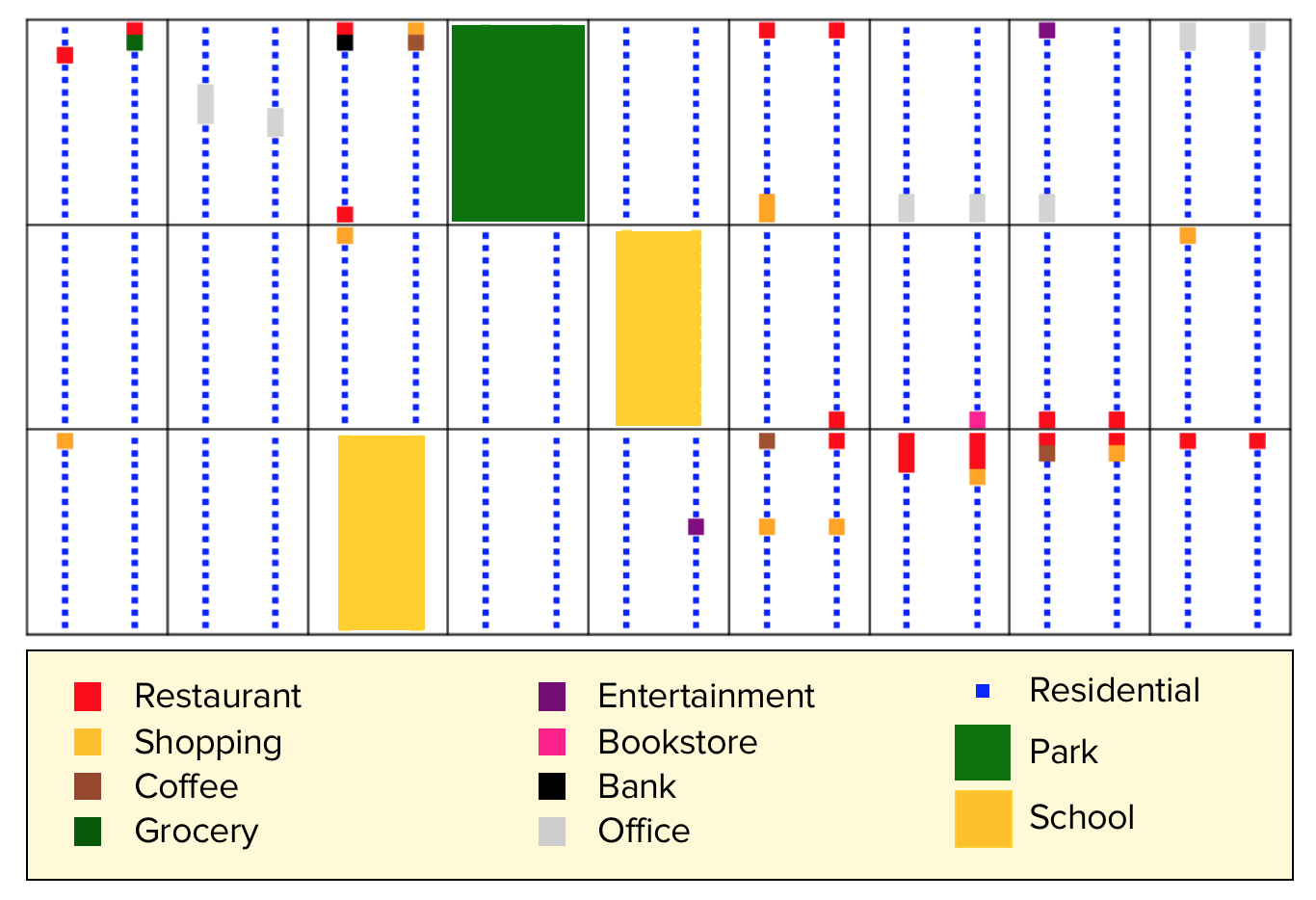Optimizing walkability
Many designers and researchers have grappled with the problem of optimally locating buildings and use types in a neighborhood-scale development. But little work has used datadriven optimization to aid in creating urban design schemes. The paradigm of single-use Euclidian zoning has heavily impacted the way our neighborhoods, cities, and suburbs are designed, resulting in the physical separation of uses. However, as we grapple with emerging issues of environmental and social sustainability in cities, there is a pressing need to consider alternative urban designs that require less dependence on personal automobiles and that foster healthier cities. In this work, we develop a methodology for (1) automatically assessing the walkability of neighborhoods by adopting a common walkability metric and (2) optimizing the layout of buildings and amenities across a known grid in order to maximize the walkability metric. We apply this methodology to a case study of the Potrero Hill neighborhood in San Francisco, California. We find that, in comparison to the existing layout that can be characterized by Euclidian-style separation of uses, the optimized layout suggests distributing amenities across the street network, resulting in a two-fold increase in walkability. This tool and analysis have the potential to provide computational and data-driven support for urban designers and researchers hoping to understand and improve the walkability of urban spaces.
